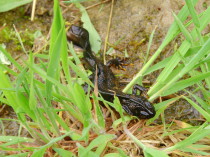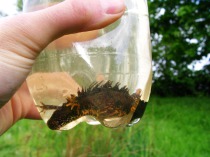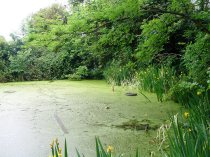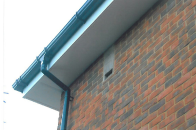Great Crested Newt Survey and Mitigation
Introduction
Our ecologists are registred under Natural England Class Licence CL08 to carry out great crested newt surveys and have wide experience of surveying ponds and terrestrial sites for the presence of great crested newts and compiling mitigation plans for development sites.
Working in accordance with the nationally recognised Natural England Great Crested Newt Mitigation Guidelines (2001), we offer surveys, mitigation and advice to a high professional standard abiding to best practice guidelines.
Why are great crested newt surveys needed?
Great crested newts are fully protected by the Wildlife & Countryside Act 1981 (as amended) and by the Conservation of Habitats and Species Regulations 2017 (‘Habitat Regulations’). In summary, the legislation combined makes it an offence to:
- Damage or destroy a breeding site or resting place or intentionally or recklessly obstruct access to a structure or place used for shelter by a great crested newt;
- Deliberately, intentionally or recklessly disturb great crested newts; in particular any disturbance which is likely to impair the ability of great crested newts to survive, breed or reproduce or nurture their young; or in the case of hibernating or migrating great crested newts, to hibernate or migrate; or to affect significantly the local distribution or abundance of the species;
- Deliberately kill, injure or take any great crested newt.
Any development work that has the potential to commit any of the offences listed above should be informed by a great crested newt survey carried out by a suitably qualified ecologist. We have experience of undertaking detailed terrestrial and aquatic assessments for the presence of great crested newts on a variety of residential and commercial development sites for submission with planning applications.
What does a great crested newt survey entail?
If development will have a direct impact on a pond or have an impact on land within 500 metres of a pond, the proposals may affect great crested newt populations or individuals and survey work is required to determine if great crested newts are present or absent, and to determine the size and distribution of local populations.
Aquatic methods for determining the presence of great crested newts in ponds include: bottle trapping, torching, netting and egg searching. A terrestrial assessment of land within 500 metres of a pond containing breeding great crested newts would involve a site walkover by a suitably qualified ecologist to determine if the land provides habitat suitable for great crested newts.
The results of these assessments are essential to determine the impacts that the development would have on great crested newts and are required by the local authority when considering planning applications, and at a later stage i.e. if planning consent is granted, by Natural England to obtain a European Protected Species Licence to allow the works to take place lawfully.
Mitigation
If great crested newts are known to be on the development site or are in the local area and likely to be affected unavoidably by the works, for example through loss of breeding ponds, or terestrial habitats, a programme of mitigation and compensation will be required under the terms of a European Protected Species licence. The mitigation scheme may involve the translocation and/or exclsuion of newts from areas of development to protected areas away from the development area. We are able to undertake all the survey work required and advise on mitigation and compensation strategies.








